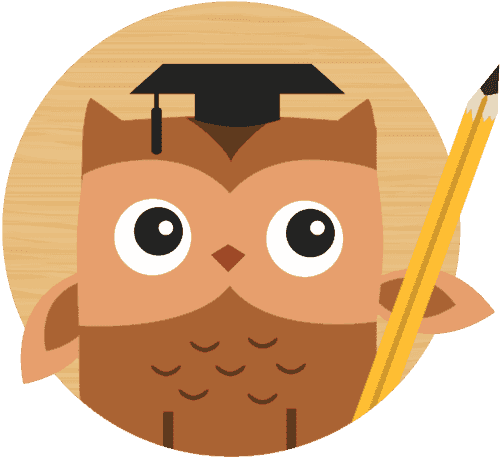As a teacher, parent or an educator understanding your student’s or children’s learning style is a prerequisite to creating a better and more personalized learning experience. Technically, your child’s learning style refers to the preferential way in which he or she absorbs, processes, comprehends and retains information. Unless you figure out the learning patterns of your children, you won’t be able to help them learn at their maximum potential. If your children or students have a strong affinity for one learning style, you can tailor their study and assignments (especially at home) to support that strength.
Most children begin to read usually between the ages of 5 and 6. It is an exciting time and a great milestone to see your child graduating to being a reader. If your child constantly struggles with certain kinds of tasks, however, you may want to consider whether he/she has a learning disability; if he/she does, you can support him or her at home and work with teachers to ensure that accommodations are made in school.
One of the areas of education that has been thoroughly studied and discussed is the topic of the best ways to teach students to read. It is important for educators to understand the differences in their students’ learning styles so that they can implement best practice strategies into their daily activities, curriculum and assessments.
Teaching Children How To Read:
In order to teach children to read, parents and educators can deploy one of the following methodologies to ensure that what is being taught is actually being comprehended.
1. Read along with your child:
Teaching your child to read is a must. Make the time to do it starting from the time he/she is an infant. Reading with your newborn creates a bond between you and your child as well helps your child get familiar with the reading process. If you have helped your children enjoy reading from the they were an infant, their interest in reading will be unstoppable throughout their life. Make reading practice a family goal and spend at least 15-20 minutes in this process every day.
Listed below are are some physical books that you could read with your children:
Birth-1 Year: Lullabies, Board Books (with real pictures), Cloth Books (with various textures), Song Books
1 Year-3 Years: Rhyming Books, Songbooks, Short-Story Board Books
3 Years-5 Years: Alphabet Books, Song Books, Picture Books, Rhyming Books
5 Years and up: Start using technology like the WhizRead app
2. Ask Them Questions And Interact More
There is no use in reading if your child is unable to comprehend the words they have read. Asking your child questions while reading is extremely effective in developing their comprehension skills and also encourages your child to interact with the book more. This teaching practice helps to improve your child vocabulary and enhances their ability to interconnect things that they read.
3. Offer Them Hands-on Learning Experiences
Hands-on learning produces longer retention and more meaningful experiences for your children. To improve your child’s letter recognition skills, you can use multiple senses or locations. For example, to help your child understand what a letter and envelope are, use the sound it makes. To do this use your fine motor skills to make the sound of cutting, gluing and creating an envelope.. Then show how to create a letter and then place it in the envelope and seal it. It would be more effective if you understand what your child’s strengths are, their areas of interest and then target activities that fit their skills.
4. Taking Advantage of Education Tools
The teaching process has drastically changed over the decades. Institution-based education is still present of course, but there is a heavier focus more than ever on learning at home. Using the Internet is the ultimate tool to find all the information you need. There are tons of software, apps, and websites available for children that have been exclusively developed to cater to their learning needs. Let us take a look at a few of them:
Interactive Websites:
There are a ton of engaging websites for children and early learners which can gradually improve their key academic concepts. Starfall is a phonics-based website for children from pre-K through first grade that aims to develop and strengthen reading skills. ABC Ya, Cookie and Fuel the Brain are some feature age-appropriate educational games and activities spanning all subject areas. Math Magician and XtraMath help children improve their math fluency with addition, subtraction, multiplication, and division. These are a few examples and likewise, you could find a lot of websites that are focused on improving a child’s learning abilities.
Digital Storytelling:
Digital storytelling helps children by integrating reading, writing, speaking, and listening tools. Proficient digital tools such as Puppet Pals, Book creator & VoiceThread allows children to create and share materials through the use of audio, text, and visual formats. It helps improve their pronunciation and vocabulary skills.
Make Use of Apps
Apps are a very good learning source to help children improve their reading and learning abilities. According to researchers, iPad apps have a positive impact on child’s academic abilities. Bringing iPads into the classroom is an exceptional way to generate excitement about learning. To be more specific, WhizRead is a featured iPad app that combines the power of multisensory tools (see and hear) and natural language processing techniques that offers readers a more personalized and engaging learning experience.
eBooks
In addition to the textbooks classrooms provide, teachers and parents can take advantage of many sites featuring popular children’s books online. Some include Disney Digital Books, TumbleBooks, and We Give Books. Features like text highlighting and audio narration creates a more specific interest for children to learn rather than reading from traditional old books.
Conclusion
Teaching children how to read is an important activity that needs to start when they are infants. More importantly, understanding their learning styles and utilizing different methodologies and best practice strategies to support them are key to making children independent and confident readers.

